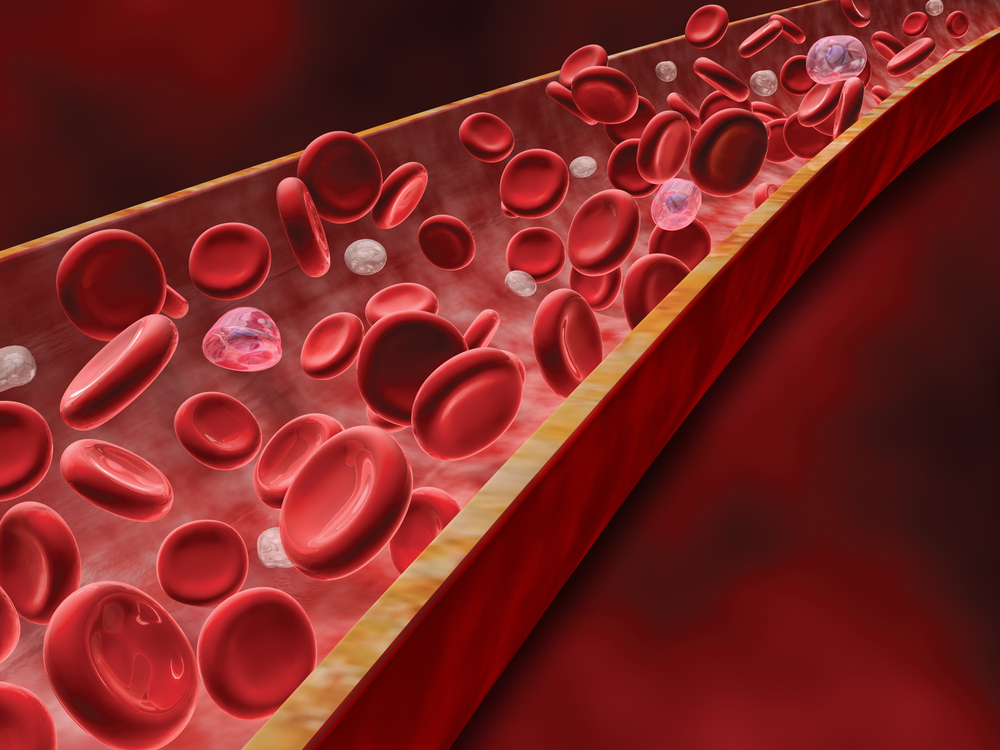Blood Test for Toxic Amyloid May Detect Alzheimer’s 8 Years Before Symptoms, Study Says
Written by |

A simple test of amyloid-beta protein levels in a person’s blood may offer a way to diagnose Alzheimer’s disease up to eight years before any clinical symptoms are evident, a study shows.
The study, “Amyloid blood biomarker detects Alzheimer’s disease,” was published in the journal EMBO Molecular Medicine.
While Alzheimer’s disease (AD) has few, if any, effective treatments, a key step in possibly developing a disease-modifying therapy is thought to be early diagnosis — determining who has the disease before its symptoms are evident. But current diagnostic methods are either invasive, such as looking for biomarkers in cerebrospinal fluid, or expensive, such as positron emission tomography (PET) scanning.
Researchers at the German Cancer Research Center (DKFZ) in Heidelberg, Germany, have developed a blood test they say can detect early indicators of Alzheimer’s long before the first symptoms.
The team focused on amyloid-beta, the protein that accumulates as plaques in a patient’s brain, to determine if blood levels would be revealing. Amyloid-beta, in its disease form, is characterized by an abnormal 3D structure — a sticky and sheet-like folded structure considered toxic because it tends to aggregate. The toxic protein is known to start accumulating in a person some 15 to 20 years before disease symptoms are evident.
Using infrared light, the blood test can distinguish the ratio of toxic and normal amyloid-β, because the two absorb that light at different frequencies.
Researchers first used blood samples from 36 people with so-called prodromal, or very early, Alzheimer’s who were enrolled in the prospective Swedish BioFINDER study. Prodromal AD is marked by mild cognitive impairment, but not dementia, and these patients had evidence of toxic amyloid deposits in brain scans. Another 37 people with normal scans served as controls.
Results showed the blood test reliably detected toxic amyloid-beta in the prodromal AD group.
Next, researchers evaluated the blood test’s potential to assess the levels of toxic amyloid-beta years before disease onset.
They used blood samples from 65 older adults in a German population-based ESTHER group study, launched in 2000 by Hermann Brenner at DKFZ. These people later would be diagnosed with Alzheimer’s disease. Results from their blood samples were compared to those of more than 800 healthy controls.
“The blood plasma samples used for the present analyses were collected at baseline (2000-2002), several years before clinical diagnosis of AD,” the researchers wrote.
Again, the blood test was able to detect signs of Alzheimer’s in individuals without clinical symptoms on average eight years before a clinical diagnosis, with an overall diagnostic accuracy of 86 percent.
Overall, while the test paves “the way towards a minimal‐invasive blood screening assay for early AD and it shows a novel innovative approach to detect early states of misfolding diseases,” the researcher concluded.
But, they added, to be of clinical use “the performance of the immuno-infrared-test has to be improved and the assay needs to be validated in a multicentre clinical study especially designed for AD.”
They are planning to also evaluate this test for Parkinson’s disease, measuring a protein biomarker called alpha-synuclein, a press release said..





